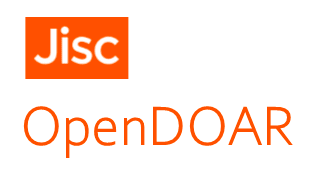| dc.creator | Carrillo Guerrero, Lázaro | es |
| dc.date.accessioned | 2017-12-20T12:20:13Z | |
| dc.date.available | 2017-12-20T12:20:13Z | |
| dc.date.issued | 2006 | |
| dc.identifier.citation | Carrillo Guerrero, L. (2006). La (lógica) construcción de la realidad. Ámbitos. Revista Internacional de Comunicación, 15, 129-156. | |
| dc.identifier.issn | 1139-1979 | es |
| dc.identifier.issn | 988-5733 | es |
| dc.identifier.uri | http://hdl.handle.net/11441/67871 | |
| dc.description.abstract | Toda actividad de la lengua requiere unas representaciones cognitivas y unas construcciones lógicas para actuar sobre el mundo y situarse ante lo necesariamente o probablemente verdadero. Ello hace que, en la comunicación lingüística, el texto se construya de acuerdo a unas alternativas lógicas particulares y sociales, y que dentro de cada discurso haya una racionalidad construida adaptable a los interlocutores y a las situaciones, y variable de acuerdo con las capacidades de los participantes y sus cálculos estratégicos. En este marco, de interacción social y de relación lengua-pensamiento, se despliega una lógica argumentativa que se caracteriza por ser abierta a la situación comunicativa, y por estar marcada de forma prominente por un carácter expresivo, convencional, o retórico. De modo que, usar la lengua es interpretar la realidad, trazándola, al menos, desde dos perspectivas: la del hablante y la del oyente. Siendo la construcción retórica del texto la que da forma a la manera en que la gente, en su vida diaria, ve su realidad y su existencia. Se trata de estructuras sintácticas funcionando en una dinámica racional de interacción comunicativa y construyendo unas realidades comunicativas con un determinado sentido lógico y una determinada fuerza pragmática. Y donde se establece una correspondencia entre la estructura del texto y la estructura del mundo, y donde la acción del discurso construye una realidad exterior y sustenta una realidad interna. | es |
| dc.description.abstract | Every language activity requires some cognitive representations and some logic constructions in order to function upon the world and to get a position in the face of what is necessarily or probably truthful. In linguistic communication, this makes that the text be built according to some concrete and social logic alternatives, and that within each discourse there have an erected reality that is adaptable to the interlocutors and to the situations, and variable according to the participants’ capacity and their strategic conjectures. In this frame, of social interaction and of language-thought relation, it is spread out an argumentative logic that is characterized by being opened to the communicative situation, and by being marked in a prominent manner with an expressive, conventional or rhetoric character. Therefore, to use language is to interpret reality, sketching it, at least, from two perspectives: that of the speaker and that of the hearer. Being the text’s rhetoric construction what gives form to the manner in which people, every day, see their reality and their existence. It is about syntactic structures functioning in a rational dynamic of communicative interaction and constructing some communicative realities with a certain logic sense and a definite pragmatic force. Where there is established a correlation between the text structure and the world structure, and where the discourse’s action builds an exterior reality and supports an interior reality. | es |
| dc.format | application/pdf | es |
| dc.language.iso | spa | es |
| dc.publisher | Universidad de Sevilla | es |
| dc.relation.ispartof | Ámbitos. Revista Internacional de Comunicación, 15, 129-156. | |
| dc.rights | Attribution-NonCommercial-NoDerivatives 4.0 Internacional | * |
| dc.rights.uri | http://creativecommons.org/licenses/by-nc-nd/4.0/ | * |
| dc.subject | Lógica | es |
| dc.subject | Lengua natural | es |
| dc.subject | Retórica | es |
| dc.subject | Argumentación | es |
| dc.subject | Construcción textual | es |
| dc.subject | Interacción comunicativa | es |
| dc.subject | Discurso | es |
| dc.subject | Realidad comunicativa | es |
| dc.subject | Cognición | es |
| dc.subject | Logic | es |
| dc.subject | Natural language | es |
| dc.subject | Rhetoric | es |
| dc.subject | Argumentation | es |
| dc.subject | Textual construction | es |
| dc.subject | Communicative interaction | es |
| dc.subject | Discourse | es |
| dc.subject | Communicative reality | es |
| dc.subject | Cognition | es |
| dc.title | La (lógica) construcción de la realidad | es |
| dc.type | info:eu-repo/semantics/article | es |
| dc.type.version | info:eu-repo/semantics/publishedVersion | es |
| dc.rights.accessRights | info:eu-repo/semantics/openAccess | es |
| dc.relation.publisherversion | https://dialnet.unirioja.es/servlet/articulo?codigo=2283989 | es |
| idus.format.extent | 28 p. | es |
| dc.journaltitle | Ámbitos. Revista Internacional de Comunicación | es |
| dc.publication.issue | 15 | es |
| dc.publication.initialPage | 129 | es |
| dc.publication.endPage | 156 | es |
 La (lógica) construcción de la realidad
La (lógica) construcción de la realidad















